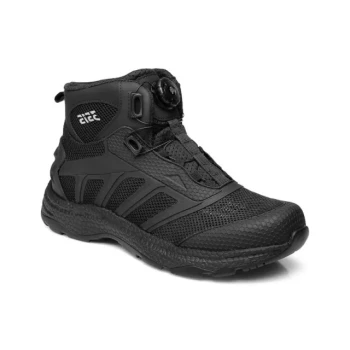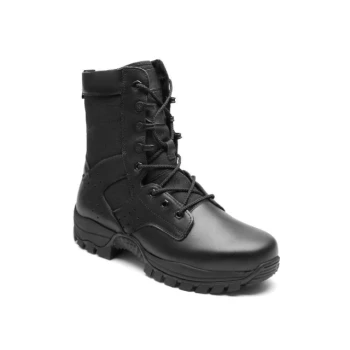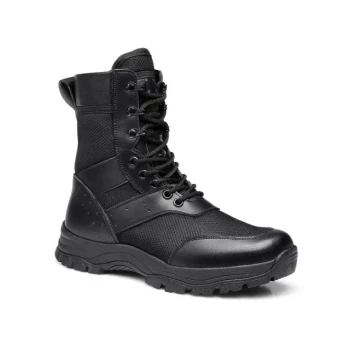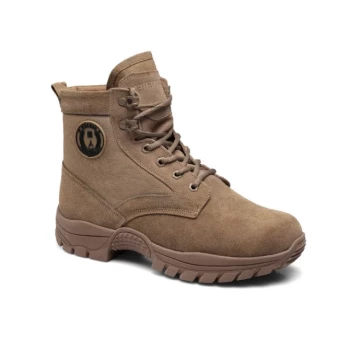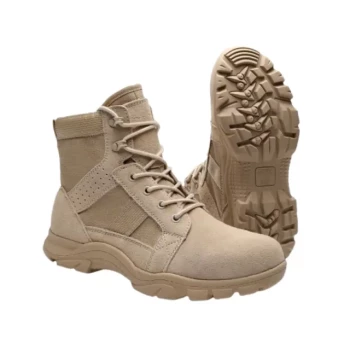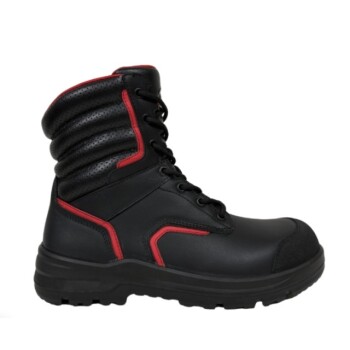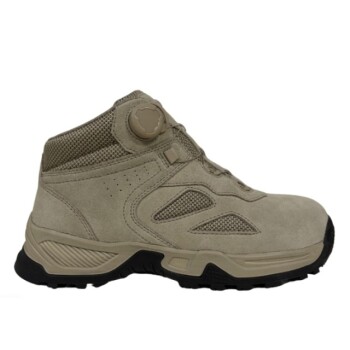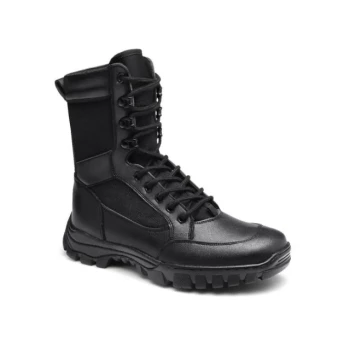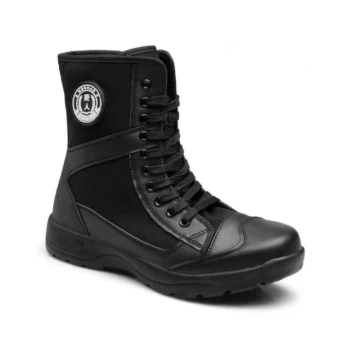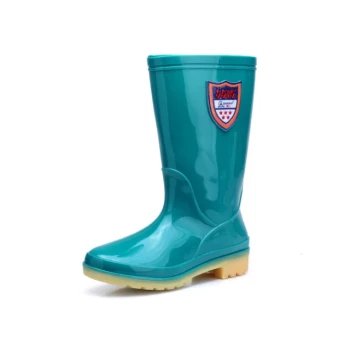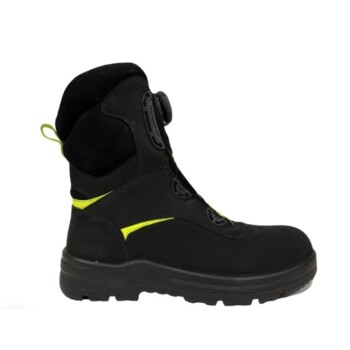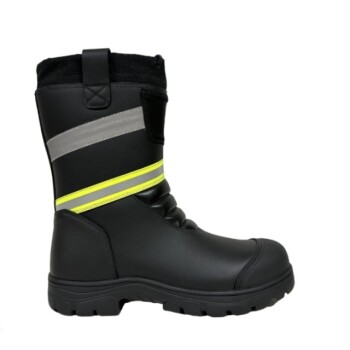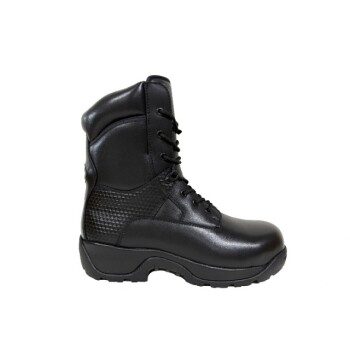At a glance, tactical and combat boots serve different masters. Tactical boots are lightweight, flexible platforms built from modern synthetics like nylon, prioritizing speed and comfort. In contrast, combat boots are heavier, more rigid tools constructed from thick, durable leather, prioritizing absolute protection and support in harsh environments.
The core difference is not one of quality, but of philosophy. Tactical boots are designed for agility and endurance in dynamic situations, while combat boots are engineered for durability and protection against extreme, hazardous conditions.
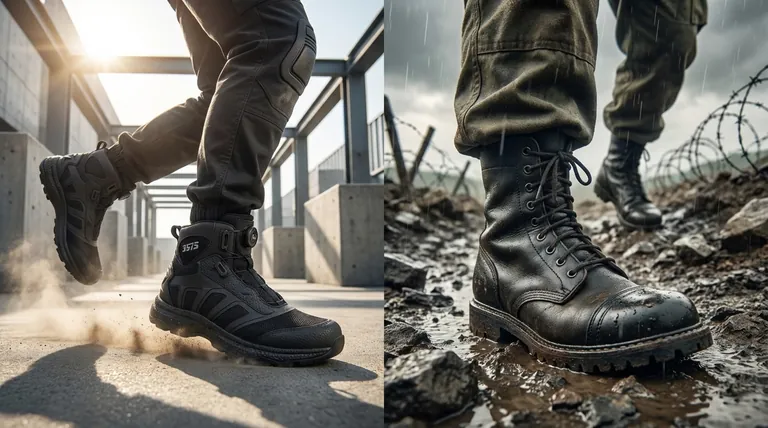
Deconstructing the Design: Material and Weight
The fundamental differences in weight and feel between these two boot types originate from their core construction materials and intended purpose.
The Tactical Boot: Built for Agility
Tactical boots are engineered for operators who need to move quickly and comfortably for long periods.
Their construction typically features nylon and other synthetic materials, which significantly reduces weight—often keeping them under two pounds. This focus on lightweight design results in a more flexible and breathable boot, reducing fatigue during long shifts or patrols.
The Combat Boot: Engineered for Endurance
Combat boots are built with the assumption of facing the most demanding and unpredictable terrains.
They are traditionally made from thick, full-grain leather and feature reinforced uppers and heavy-duty outsoles. This robust construction adds considerable weight but provides superior durability and resistance to abrasion, punctures, and the elements.
Philosophy in Action: Protection vs. Mobility
How these construction differences translate to performance is a direct reflection of their intended use cases: one prioritizes freedom of movement, the other prioritizes a fortress-like defense.
Tactical Boots: Maximizing Freedom of Movement
The lighter, more flexible nature of a tactical boot directly enhances mobility. It functions more like an athletic shoe, allowing for agile, responsive movements essential in law enforcement or training scenarios.
While they provide adequate ankle support and protection for most situations, they often lack the hardened features of a dedicated combat boot.
Combat Boots: A Fortress for Your Feet
The primary role of a combat boot is maximum protection. This is achieved through reinforced toe caps, puncture-resistant soles, and rigid ankle support.
This design is meant to shield the wearer from shrapnel, environmental hazards, and the immense physical stress of operating in a conflict zone. This level of protection inherently makes the boot heavier and less flexible.
Understanding the Trade-offs
Choosing one style over the other always involves a compromise. Understanding these trade-offs is critical to selecting the right tool for your specific needs.
The Cost of Lightweight Design
A tactical boot's emphasis on agility comes at the cost of ultimate durability. The synthetic materials may not withstand the same level of prolonged, abrasive abuse as thick leather.
Furthermore, their lighter construction offers less protection against severe impacts or extreme environmental hazards found in combat situations.
The Burden of Maximum Protection
The heavy-duty nature of a combat boot can be a liability when speed is critical. The increased weight and rigidity can lead to faster fatigue on long marches over predictable terrain.
Their thick leather construction is also typically less breathable, which can be a significant disadvantage in hot and humid climates if not properly managed.
Making the Right Choice for Your Mission
Your environment and objective must dictate your choice. Selecting the wrong boot can compromise both your safety and your operational effectiveness.
- If your primary focus is law enforcement, training, or fast-paced fieldwork: Choose tactical boots for their superior comfort, flexibility, and lightweight agility.
- If your primary focus is military deployment or operating in hazardous environments: Opt for combat boots for their uncompromising durability and protection against extreme conditions.
- If your primary focus is demanding outdoor recreation or hiking: A tactical boot often provides the ideal balance of support and performance, unless you are navigating exceptionally rugged and hazardous terrain.
Ultimately, you must align the boot's design philosophy with the demands of your mission.
Summary Table:
| Feature | Tactical Boots | Combat Boots |
|---|---|---|
| Primary Goal | Agility & Endurance | Durability & Protection |
| Weight | Lighter (often under 2 lbs) | Heavier |
| Materials | Nylon, Synthetics | Thick Full-Grain Leather |
| Flexibility | High | Low to Moderate |
| Best For | Law Enforcement, Training, Fast-Paced Fieldwork | Military Deployment, Hazardous Environments |
Need High-Performance Footwear for Your Team?
As a large-scale manufacturer, 3515 produces a comprehensive range of tactical and combat boots for distributors, brand owners, and bulk clients. Our production capabilities encompass all types of durable footwear, ensuring your team has the right gear for their mission—whether it demands lightweight agility or maximum protection.
Contact us today to discuss your specific requirements and get a quote!
Visual Guide
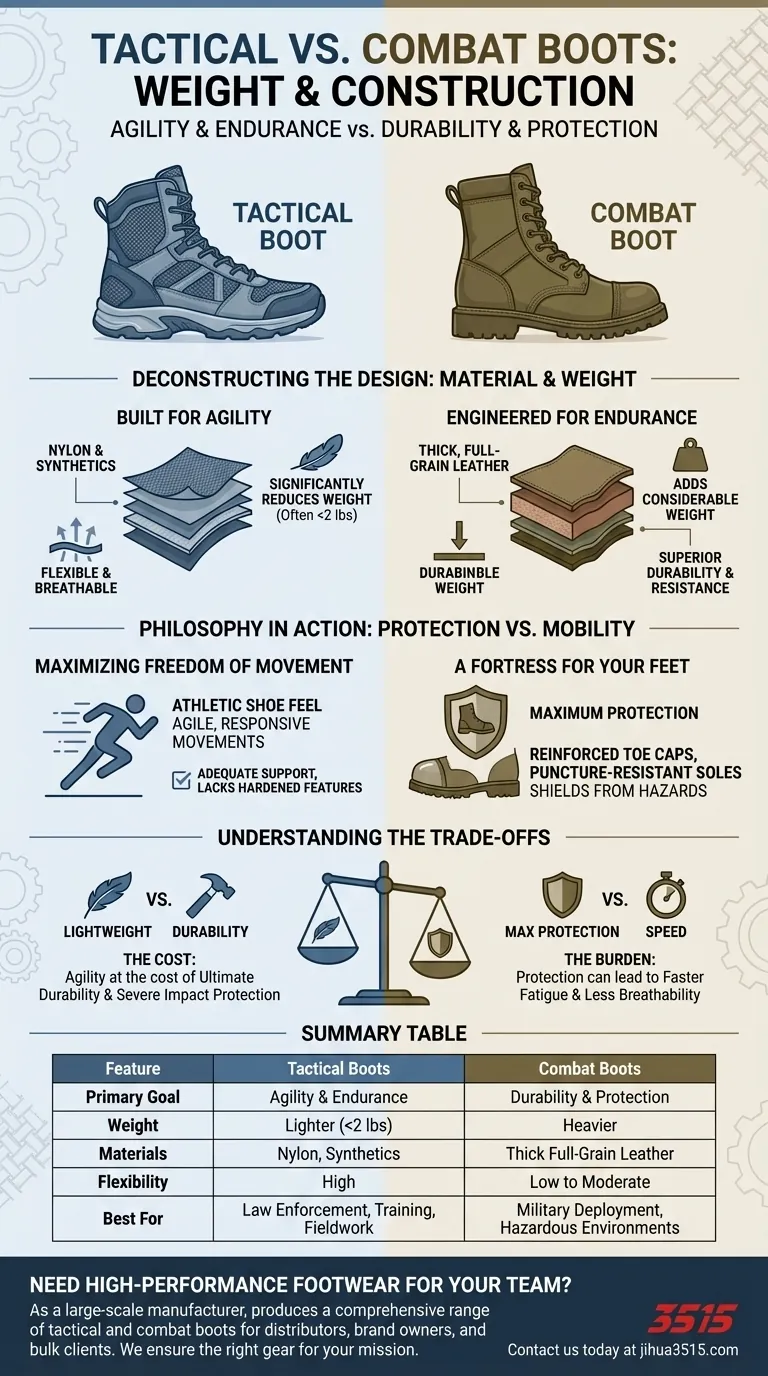
Related Products
- Wholesale Lightweight Tactical Boots with Dial Closure OEM & Bulk Orders
- Durable Mid-Cut Tactical Boots for Wholesale & Private Label
- Wholesale Waterproof Tactical Boots Custom Suede & High-Traction Soles
- Durable Leather Tactical Boots Wholesale & Custom Manufacturing for Brands
- Wholesale Durable Mid-Cut Tactical Boots for Custom & Private Label Brands
People Also Ask
- How should one choose the right size for tactical shoes? A Precision Fit Guide for Professionals
- In what scenarios are tactical boots particularly useful? Maximize Mobility and Durability in Demanding Environments
- Why is proper fit and comfort essential in tactical boots? Maximize Performance & Safety
- What are the weight and mobility differences between combat and tactical boots? Choose the Right Boot for Your Mission
- What makes traction and stability important in tactical boots? Essential for Safety & Performance
